NIL
An interview with the co-founder of Michigan’s NIL collective
Last week, a federal judge made a landmark decision that transformed the world of college athletics. Schools were granted the authority to compensate athletes directly. The court decision also regulated rules concerning name, image and likeness (NIL) payments, a ruling that came as Michigan’s NIL collective, Champions Circle, continues to thrive. Before the ruling, many […]
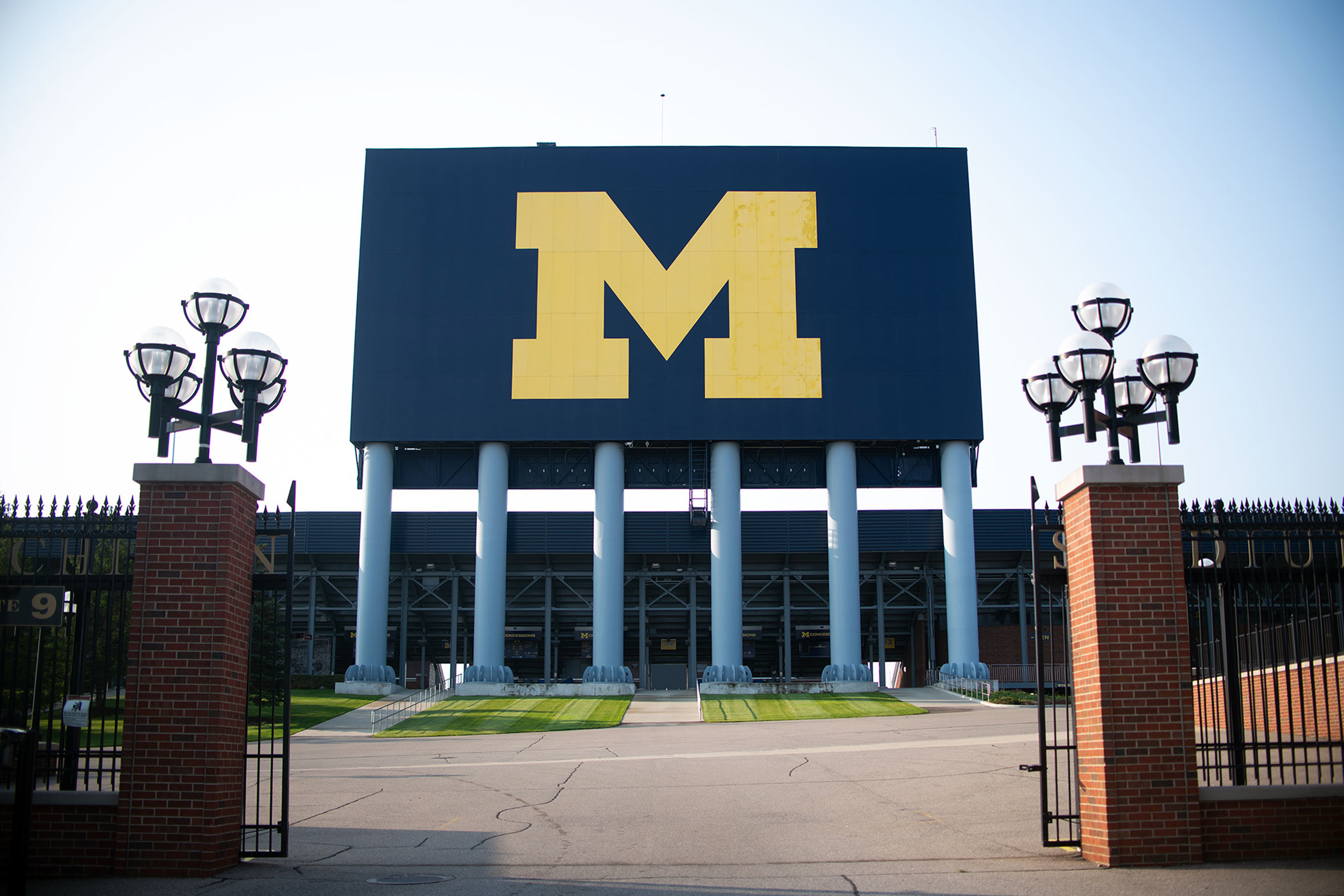
Last week, a federal judge made a landmark decision that transformed the world of college athletics. Schools were granted the authority to compensate athletes directly.
The court decision also regulated rules concerning name, image and likeness (NIL) payments, a ruling that came as Michigan’s NIL collective, Champions Circle, continues to thrive.
Before the ruling, many payments mirrored a “pay-for-play” model, where boosters and non-profit collectives would pay athletes significant amounts of money for minor services with the intention of bringing them to a certain school. Now, all NIL deals must pass through a clearinghouse to ensure athletes are receiving compensation for no more than their “fair market value.” Deals that don’t meet this criteria will be denied by the NCAA.
Like collectives around the country, Champions Circle is looking to adapt to the new NIL world. The Michigan Daily’s Jordan Klein sat down with Champions Circle co-founder Jared Wangler to discuss the collective’s strategy in the revenue-sharing era.
Responses have been edited for clarity.
Jordan Klein (JK): Players now have to be compensated for their “fair market value,” as approved by a Deloitte clearinghouse. How does that change the deals and other things Champions Circle does to get athletes to the University of Michigan?
Jared Wangler (JW): It’s a great question. I think everything you’re looking for is tailored around athlete compensation in this new revenue-sharing world, with increased oversight from the clearinghouse, and a little bit more regulation around athlete compensation outside of what the university can offer. With the new House settlement, universities are now permitted to share up to $20.5 million worth of benefits in Year 1 one. That will increase by 4% year over year, all the way to Year 3. Then, it will reset based on the equation that they came to, which is 22% of the average annualized revenues of the Power Four schools. That’s what the schools are now permitted to share.
What’s difficult is that the market for athlete compensation currently outweighs what the universities are able to bear. If you look across college football, men’s basketball, women’s basketball, softball, wrestling … If you want to be competitive at a national-title level or a conference-title level, you need to have adequate funding for what the talent costs.
I could walk you back four years when schools couldn’t provide anything, and the only money that could be provided was from brands and collectives. Most of the major markets created these collectives as a way to aggregate capital to pay the student athletes. The cap at that point was zero dollars, and there wasn’t regulation around how much money you could pay the student athlete, and what the exchange of services for. It was very laissez-faire. Now, the cap is $20.5 million, and any dollars above the cap that are being used for talent acquisition and talent retention. Those are going to be more regulated by the Deloitte clearinghouse, as you reference.
The Deloitte clearinghouse will be reviewing any deals that come from associated entities at the universities. Associated entities can mean a lot of things, but primarily they’re going to start with collectives and the multimedia rights holders. The multimedia rights holders, those are the Learfields of the world, the Playflys of the world. Think of it as the corporate sponsorship arm of these athletic departments.
In this current state, I’m bringing it back to where talent costs have gotten. You might have seen Texas Tech pay over $55 million worth of contracts to its student athletes. That’s football, that’s men’s basketball, it’s women’s basketball, baseball, softball … that’s their pool. That’s $20.5 million of revenue share from the university, and about $35 million coming from affiliated entities. It might be their collective, it might be Learfield, Playfly, whatever their MMR holder is, or a combination of the two. In this world, where there’s a clearinghouse to decide whether the deals are fair market value or not, it is the job of these collectives and associated entities, to have enough deal flow for the athletes that will pass through the ‘sniff test.’ That can be used in conjunction with the revenue sharing to come to a total compensation package that is agreeable to.
It’s probably not a secret like right now that most college football budgets, if you’re trying to compete at the top level, are between $20 and $30 to $35 million. That’s just football. And then basketball. Men’s basketball is anywhere between $10 million, and in some markets, up to $20 million. When you’re adding all these budgets together across multiple sports, you need more than just $20.5 million if you’re at a place like Michigan, Ohio State, Auburn, Alabama, Southern California, Texas.
That’s where you’re seeing these collectives and multimedia rights holders work together to get as much capital as they can, to then use and underwrite contracts for the athletes that will be above the cap. They have to be done in a way that can pass the clearinghouse standards for fair market value.
In practice, let’s say it’s a women’s basketball player, starting point guard, making $1 million. Let’s say $500,000 of it was going to come from revenue sharing, and $500,000 of it was going to come from the collective. The payment can’t just be a lump sum payment of $500,000 — show up to an event and then be on your merry way. There has to be actual work done and actual services rendered for the $500,000. That might be spread out over 12 months. It might look like 20 different commercial activations. They might do signing events, they might have merchandising promotions, they might work with brands that are affiliated with the collective or the multimedia rights holder, there might be media appearances.
There’s a whole host of services that groups like us have the athletes do to justify their NIL payments. That becomes even more critical if you want to be one of the schools ‘above the cap’ space, because that’s really the new name of the game. How much capital can you put together, and how many deals can you get to the student athletes that can make their way through the clearinghouse and be used in a way that helps underwrite competitive teams? That’s where a lot of this is moving.
JK: Deloitte estimated that roughly 70% of deals would not have passed through their clearinghouse standards. Where would that number sit for Champions Circle deals? How is the Champions Circle changing its approach so 100% of your deals meet the clearinghouse standards but also keep athletes at the compensation levels they were looking to get before these new rules?
JW: It’s hard to know for sure how much of our total deal volume would have gotten through the clearinghouse. I’d say with high confidence that we would bat at a significantly better percentage than only 30% of our deals getting through. That’s because our business was set up as a sports marketing agency before we built the collective. Valiant Management Group, which is the holding company to Champions Circle, was built as a group licensing agency, a talent rep agency and a merchandising company. It all spun up in 2021 around real commercial activity. It wasn’t until 2022 that we set up Champions Circle as a fund that dollars would come in, and then we would use that to help underwrite payments for the student athletes. All of our agreements with our athletes read as real commercial services agreements.
For the amount of money we’re paying the student athletes, are we getting that much in return for the work that they’re doing? If you took a peek behind the curtain of our event calendar, our brand activations and our merchandising, we’ve generated significant revenue of commercial dollars based on the services of the athletes. We’ve had over $7 million worth of NIL merchandise sold over the last four years. Over $3 million generated around fan events. So think golf outings, think signing events, think private meet and greets. We’ve brought in over $4 million worth of brand deals. When you look at these different parts of our business, we’re one of the few collectives, marketing agencies, that you could point to to be like, ‘Oh, they were actually using the athletes’ NIL to generate real commercial revenue.’
(Other groups) tried to capture as much money as possible and get it out the door before there’d be more regulation. Those groups are now either folding or trying to restructure as a marketing agency.
That’s really where most of this moves — putting more infrastructure and bones behind the athlete marketing agency component of what you do. There is real commercial value that the athletes’ marketing services bring, if done correctly. Not everyone is Bryce Underwood and can demand a large sum of money for an appearance or a post around the brand, but the athletes collectively can drive revenue, if done in a way that is capturing everybody’s rights together to promote a good or a service.
An example would be the starting point guard for the women’s basketball team. On her own, she couldn’t demand a $1 million budget for a brand activation. But that starting point guard in conjunction with seven of her teammates, and then becoming a Michigan women’s basketball partnership, the sum of the parts are greater than than the whole. It’s more of a collective mentality around utilizing all of their NIL together to promote a good or service, using all of their social media handles to distribute that content, using their voice to elevate whatever product or service we’re working with. It’s a different type of marketing. It’s more viewed around the property itself and aggregating all the talent together.
The really strong groups are going to separate themselves if they understand how to do this specific type of marketing. That is where you will be able to make a justifiable case to move significant sums of money through a clearinghouse, because you are a legitimate exchange of services.
JK: It seems like in the last year or so, Michigan’s NIL really took off. With the new regulation, is Michigan more uniquely positioned to succeed in the NIL space?
JW: I believe that Michigan’s always been primed to succeed in a world where it can level the playing field and start compensating its athletes. I long felt like we were fighting with one arm tied behind our back, because that’s an area where we were never active compared to some of the teams we were competing against. I do feel like we have had a leg up for quite some time.
The bad rap we got early on wasn’t because we were not doing NIL, we just weren’t using it in recruiting the way most other schools were. Almost all of our NIL money was predominantly used for the current student athletes, and not used in recruiting for prospective student athletes. That’s changed as rules and regulations have adjusted over time. Now, we do communicate NIL opportunities, and we do have those compensation conversations on the front end in recruiting, whereas we wouldn’t before. But the resources have been there. There’s been greater alignment with the athletic department over the last two years that’s really elevated the fundraising efforts.
Michigan has always been a place that demands brand attraction, and fan and donor engagement. We’ve had a competitive advantage over the last four years now that we can pay student athletes, and I believe that will only continue to grow that competitive advantage over time, because we are at a place like Michigan. It has the largest living alumni base. We have more brands that want to partner with the ‘block M’ and partner with the athletes in conjunction with the ‘block M’ more than any other school in the country. We sit in a robust business market in metro Detroit, but have national ties into different markets because we have alumni in New York and alumni in California.
We’re able to make a compelling pitch to brands when they want to do real NIL activations with our student athletes. Our friends down the street, in Michigan State and Columbus, don’t quite have that same competitive advantage because they’re so much more of a regional, localized brand than Michigan, which is more national. I do think that Michigan only stands to benefit from that.
You can’t discount the educational piece of it, and the relationship value of it. When the sum of money for these student athletes has gotten so significant, then you really have to start peeling back. What the advantage is now, if you have money, then how can you multiply that? Some of the best multipliers of compensation are relationships and education. How are you going to take those earnings in that window while you’re in college, and multiply that year over year. That’s our goal with what we’re trying to do, and I know that’s the goal with Michigan athletics — create great infrastructure, develop relationships.
As they’re earning that money, it’s not about how much you make. It’s about how much you can keep and how you can multiply that over time. There’s no better market in college sports than Michigan for that. You might be able to look at Stanford or Notre Dame. I’d say those are up to par, but Michigan is just so much bigger, and the engagement is so much more significant than those two other schools. I really do believe we check all the boxes, if you’re a prospective student athlete. … There’s a whole host of reasons, and we’re at the level now where we can compete from a compensation standpoint. It’s not like it was five years ago, six years ago and all the years before that, where some schools might have something under the table, and we had nothing. Now there’s an equalizer there. Michigan is very well positioned for the future of college athletics.
Related articles
NIL
ESPN ranks Top 10 freshmen in college football, names 15 to watch
There are few things more exciting for college football fans than watching superstars emerge in real-time. On Monday, ESPN projected the top 10 freshmen for the 2025 campaign, while including 15 other first-year players to watch. College football had no shortage of freshmen standouts last season. Ohio State wide receiver Jeremiah Smith staked his claim […]

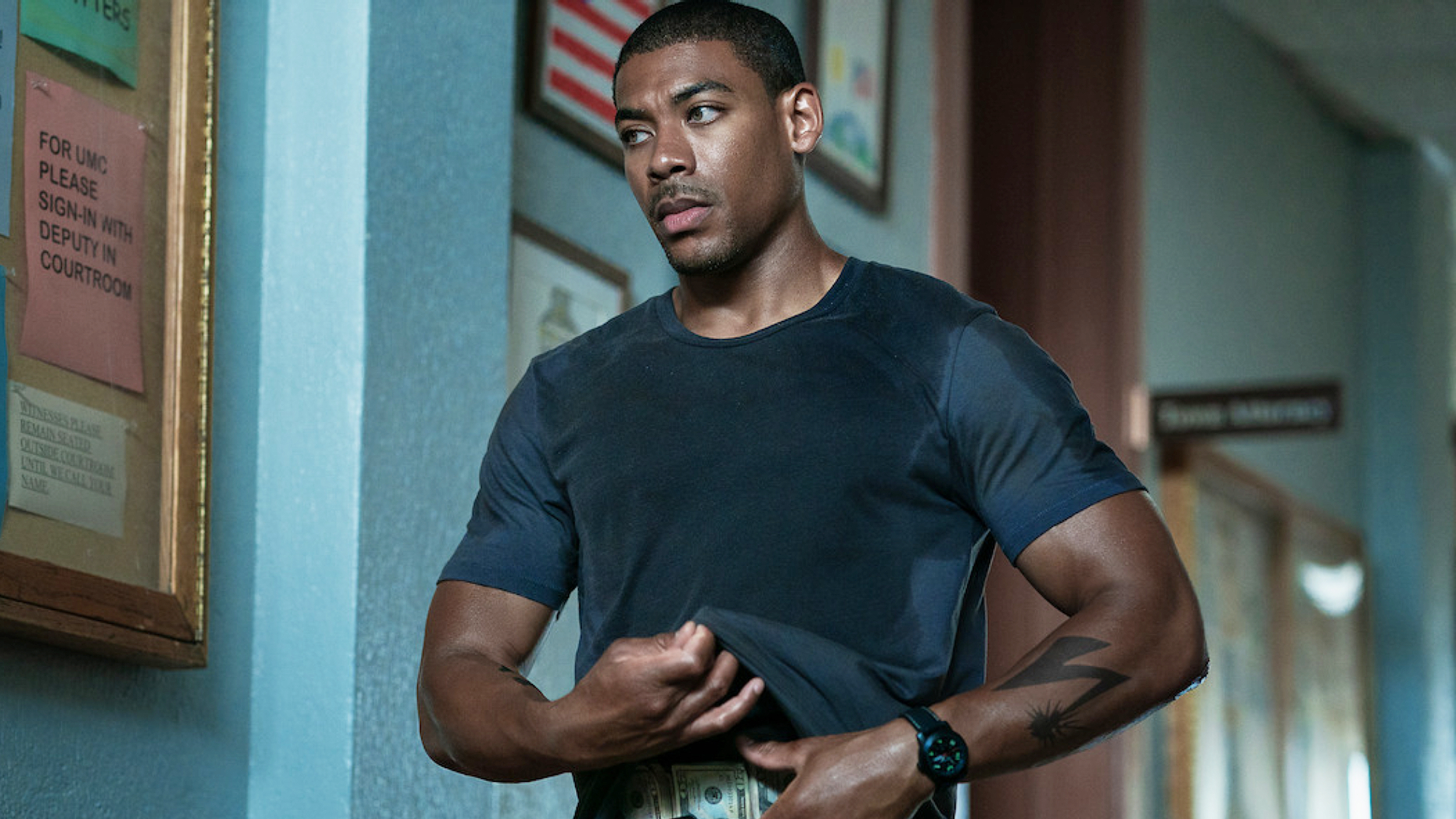
There are few things more exciting for college football fans than watching superstars emerge in real-time. On Monday, ESPN projected the top 10 freshmen for the 2025 campaign, while including 15 other first-year players to watch.
College football had no shortage of freshmen standouts last season. Ohio State wide receiver Jeremiah Smith staked his claim as arguably the best player in the country, guiding the Buckeyes to a national championship.
Meanwhile, in the SEC, freshmen such as DJ Lagway, Dylan Stewart and Ryan Williams raised eyebrows. With a fresh class of talent entering the scene, let’s examine who ESPN believes will rise to the top of the college football world this fall.
Dakorien Moore was the No. 1 wide receiver in the 2025 recruiting cycle, according to the Rivals Industry Rankings. Evidently, ESPN expects Moore to live up to his billing and follow in the footsteps of last year’s No. 1 freshman wideout: Jeremiah Smith.
Moore should immediately be athletic enough to compete with elite competition. He boasts a 10.4-second 100-meter dash and 24-foot long jump. With senior Oregon WR Evan Stewart expected to miss a significant portion of the season, Moore will have plenty of opportunities to shine.
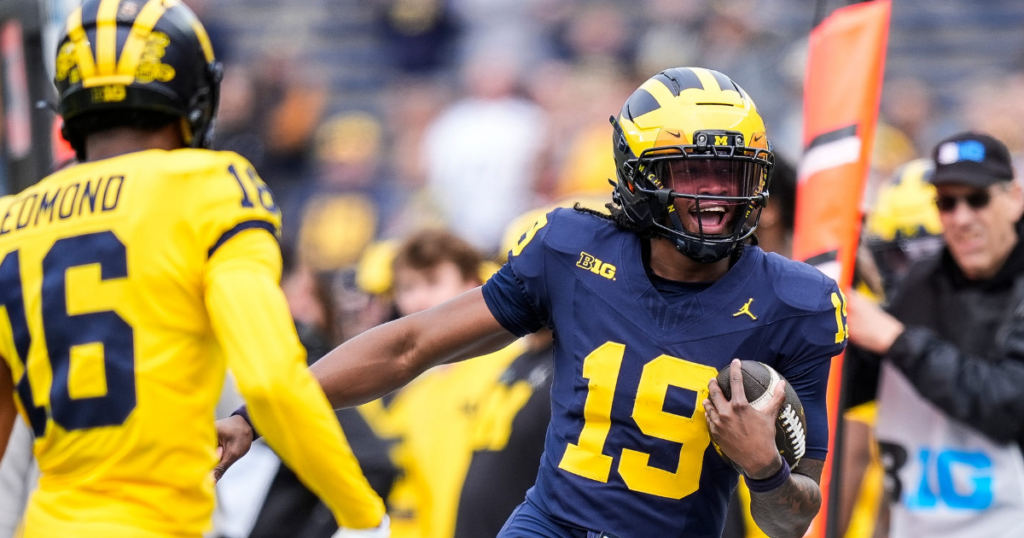
It’s a bit surprising that ESPN didn’t have Bryce Underwood at No. 1 on its list. After all, Underwood is the No. 1 player in the 2025 recruiting cycle, and has reportedly impressed Michigan’s staff this summer.
Nonetheless, it’s not a sure thing that Underwood will start for the Wolverines this fall, which gives ESPN some pause. When Underwood does his get his chance to shine, most experts are willing to bet he’ll succeed. NFL scouts are already drooling over the 6-foot-4, 210-pound freshman.
Despite being the No. 4 running back in the Class of 2025, Gideon Davidson is the first running back on ESPN’s list. In fairness, Davidson is entering an excellent situation. Clemson is returning four of its five starting offensive linemen from last season, but lost RB1 Phil Mafah to the NFL.
Davidson could immediately fill the hole left by the standout RB. During his time at Liberty Christian, Davidson amassed 7,438 rushing yards and 118 rushing touchdowns on 701 carries. For those who aren’t mathematicians, that’s a ridiculous 10.53 yards per carry.
Ohio State sure knows how to pick ’em. ESPN believes cornerback Devin Sanchez will be the Buckeyes’ next great freshman. Sanchez gets plenty of excellent practice, defending players like Jeremiah Smith and Carnell Tate at practice.
In turn, when Sanchez faces outside competition, it should feel significantly easier than what’s he grown accustomed to. At 6-foot-2, with a 10.69-second 100-meter dash, Sanchez has the physical attributes necessary to go up for jump balls against the best wide receivers in the country.
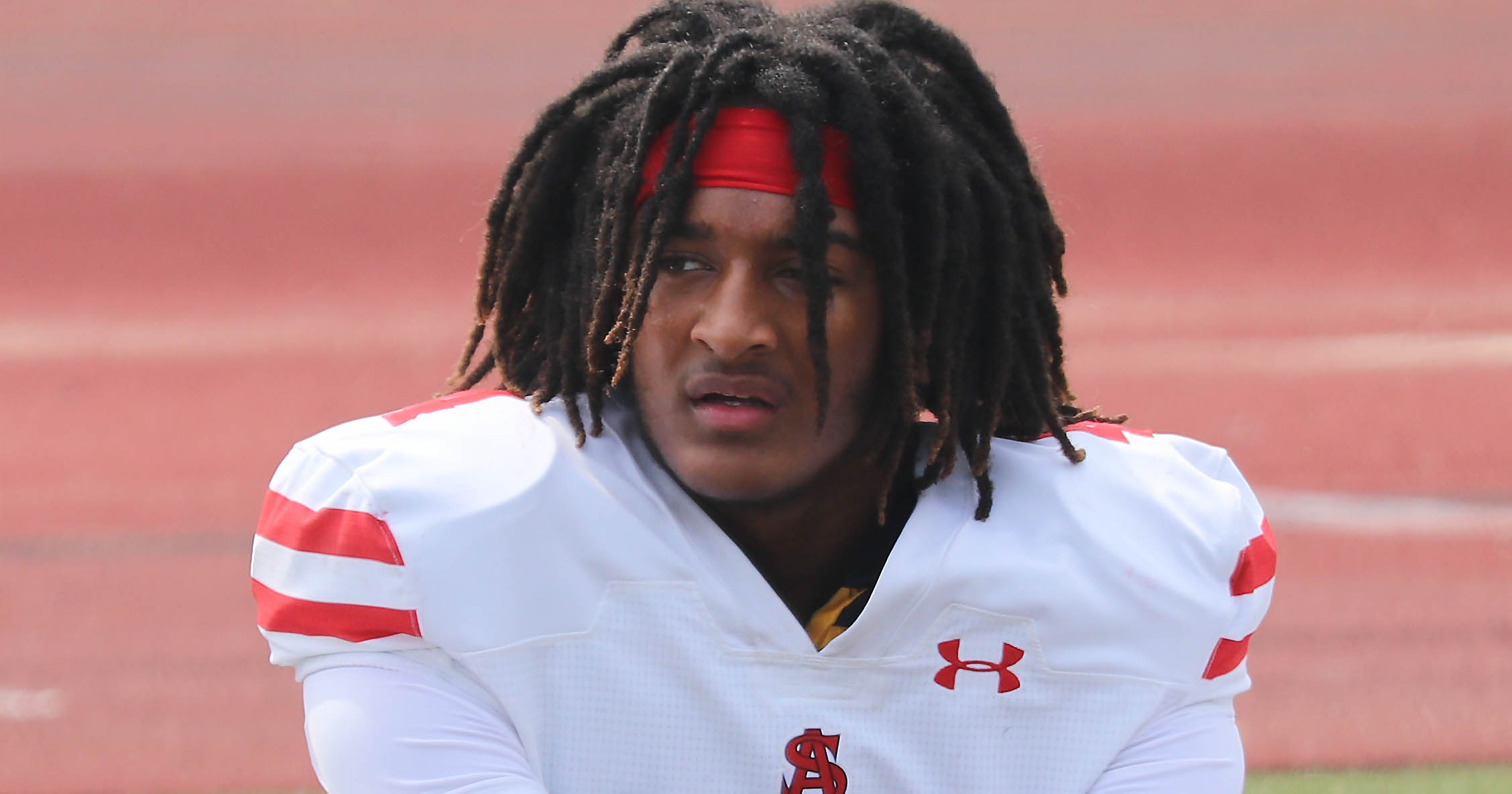
Bryce Underwood isn’t the only Big Ten freshman quarterback expected to make waves this fall. Malik Washington was the No. 11 QB in the 2025 recruiting cycle and is expected to be starting behind center before the season is over.
In his senior season at Archbishop Spalding, Washington erupted for 1,970 passing yards and 22 passing touchdowns while adding eight more in the ground game. He led the school to a 25-0 record in conference play as a starter.
While David Sanders Jr. won’t be launching 60-yard touchdown passes or hurdling defenders, he could be the most important freshman in the nation to his team. Tennessee lost Nico Iamaleava to the transfer portal this offseason, and will have a QB inexperienced with its systems running the offense in 2025.
It’ll be up to Tennessee’s front five to protect the Volunteers’ QB until he’s able to find his groove. Sanders is seemingly determined to provide that protection. The North Carolina native has reportedly added 30 pounds of muscle this offseason, with hopes of winning starting spot on the line.
DJ Pickett has more experience ahead of him on the roster than most of the players on this list. Alas, it won’t be easy for Tigers head coach Brian Kelly to keep the 6-foot-5, lightning-fast defender on the sidelines.
Pickett was the No. 2 cornerback in his recruiting class. He collected 94 total tackles and 10 interceptions during his prep career. His uncle is former NFL defensive tackle Ryan Pickett, who won a Super Bowl with the Green Bay Packers.
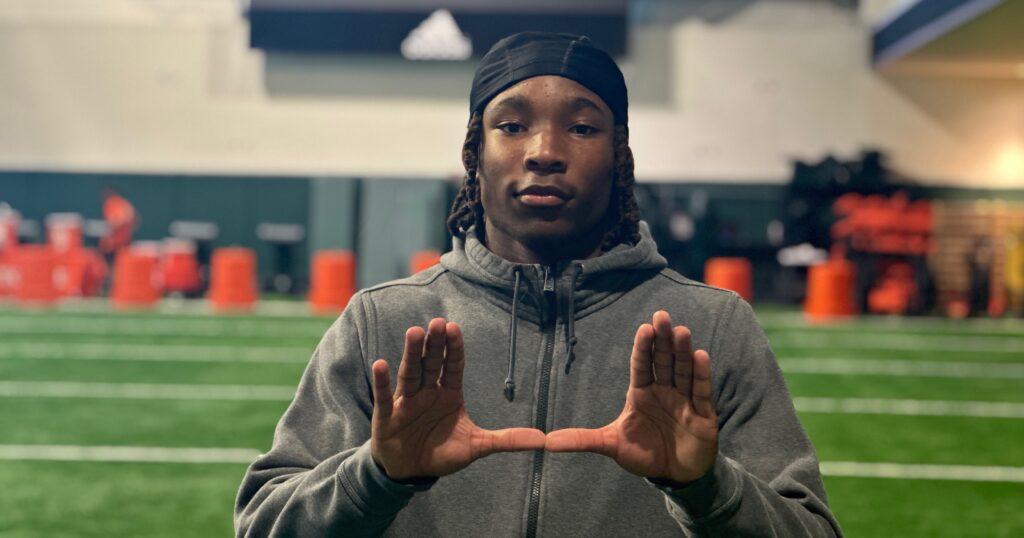
Demetres Samuel is looking to join the trend of two-way stars in college football after Colorado‘s Travis Hunter won the Heisman Trophy last season. While Samuel isn’t particularly large, neither was Hunter, and he ended up being the No. 2 pick in the 2025 NFL Draft.
Samuel can run a 10.5-second 100-meter dash and has elite hands. He’ll most likely start for Syracuse’s defense, but don’t be surprised if he becomes one of the team’s best pass-catchers before the season concludes.
Julian Lewis is engaged in a heated quarterback battle with veteran transfer Kaidon Salter. Although Lewis lacks Salter’s experience, Colorado’s coaching staff is considering him a legitimate successor to Shedeur Sanders.
Lewis is consistent, with a ball that shoots out of his hand quickly and on target. Lewis was a three-year starter in high school, logging 11,010 passing yards and 144 touchdowns, the fifth-most in Georgia high school football history.
There’s been nothing but great things coming out of Texas’ camp about Graceson Littleton. With only six returning starts on Texas’ defense this season, there is an opening for Littleton to immediately contribute.
In his senior campaign at Wiregrass Ranch, Littleton notched 30 tackles, two interceptions, eight pass break-ups, two tackles for loss and a fumble recovery. For his efforts, he was named a Sunshine Athletic Conference East First-Team selection.
Watch list freshmen
***In alphabetical order.***
DT Amare Adams, Clemson
OL Andrew Babalola, Michigan
WR Jayvan Boggs, Florida State
WR Lotzeir Brooks, Alabama
WR Elijah Burress, Notre Dame
TE Linkon Cure, Kansas State
WR Quentin Gibson, Colorado
DT Elijah Griffin, Georgia
OL Brayden Jacobs, Clemson
CB Dijon Lee, Alabama
WR Donovan Olugbode, Missouri
QB Jaron-Keawe Sagapolutele, California
WR Travis Smith Jr., Tennessee
DE Jahkeem Stewart, USC
WR Dallas Wilson, Florida
NIL
Pair of Georgia stars unite for new NIL deal before 2025 college football season
Georgia quarterback Gunner Stockton and tight end Lawson Luckie are teaming up off the field in a new NIL partnership before the 2025 college football season. The Associated Credit Union – a member-owned financial institution in the state of Georgia – revealed its new partnership with Stockton and Luckie on Monday, according to DawgNation. Stockton […]

Georgia quarterback Gunner Stockton and tight end Lawson Luckie are teaming up off the field in a new NIL partnership before the 2025 college football season.
The Associated Credit Union – a member-owned financial institution in the state of Georgia – revealed its new partnership with Stockton and Luckie on Monday, according to DawgNation.
Stockton enters his redshirt junior campaign as a first-year starter after backing up Carson Beck, who transferred to Miami in the offseason. The former four-star out of Tiger, Georgia, helped lead the Bulldogs to a comeback win over Texas in the SEC championship before making his first start against Notre Dame in the College Football Playoff.
Luckie also has a significant season ahead, as the third-year tight end has worked himself into a starter alongside senior Oscar Delp.
Luckie, out of Norcross Georgia, posted career highs in receptions (24), receiving yards (348) and touchdowns (3) as a sophomore last season.
Stockton holds an On3 NIL valuation of $823,000 while Luckie sits at $318,000.
The ACU partnered with former Georgia All-American safety Malaki Starks last season before he was taken by the Baltimore Ravens the first round of the 2025 NFL Draft. Now, it’s Stockton and Luckie who will help the institution “engage with younger audiences in a way that feels genuine, aspirational and rooted in shared values.”
ACU is also “exploring ideas” for the pair of Georgia standouts to give back to their communities with football clinics alongside local schools, mentorship-focused events and youth engagement activities, according to the report.
Stockton, Luckie and the Bulldogs will open the 2025 season at home against Marshall on Aug. 30 at 3:30 p.m. ET (ESPN).
NIL
Former North Meck basketball standout hosts youth basketball camp in Concord
Isaiah Evans, a former North Meck High School star and current Duke basketball guard, hosted his first youth camp this morning at Carolina Courts in Concord. The camp, attended by about 80 kids, focused on basketball skills as well as life skills such as discipline and hard work. Evans partnered with the local non-profit ‘Destined […]
Isaiah Evans, a former North Meck High School star and current Duke basketball guard, hosted his first youth camp this morning at Carolina Courts in Concord.
The camp, attended by about 80 kids, focused on basketball skills as well as life skills such as discipline and hard work. Evans partnered with the local non-profit ‘Destined for Greatness’ to organize the event.
Advertisement
“I’m super thankful, bottom line. This is something special to me, and again, we’re getting bigger and better next year,” said Evans. “I’m just super thankful for all the kids coming out, and all the parents that brought the kids out.”
During the camp, Evans took time to engage with the participants by taking photos and signing shirts and McDonald’s All-American cards.
ALSO READ: NC State basketball team denied lost NIL earnings after court dismisses NCAA lawsuit
The camp is expected to grow in the coming years.
(WATCH BELOW: Legette, Horn return to field as Panthers look past preseason loss)
NIL
Scott Hanson admits he would be open to hosting college football RedZone
With ESPN acquiring the rights of NFL Network, questions have poured in about the future of NFL RedZone. Some have even gone a step further, wondering if college football could get a similar type of show going. Getting everything centralized instead of flipping channels or using multiple screens would help fans across the country. Turns […]
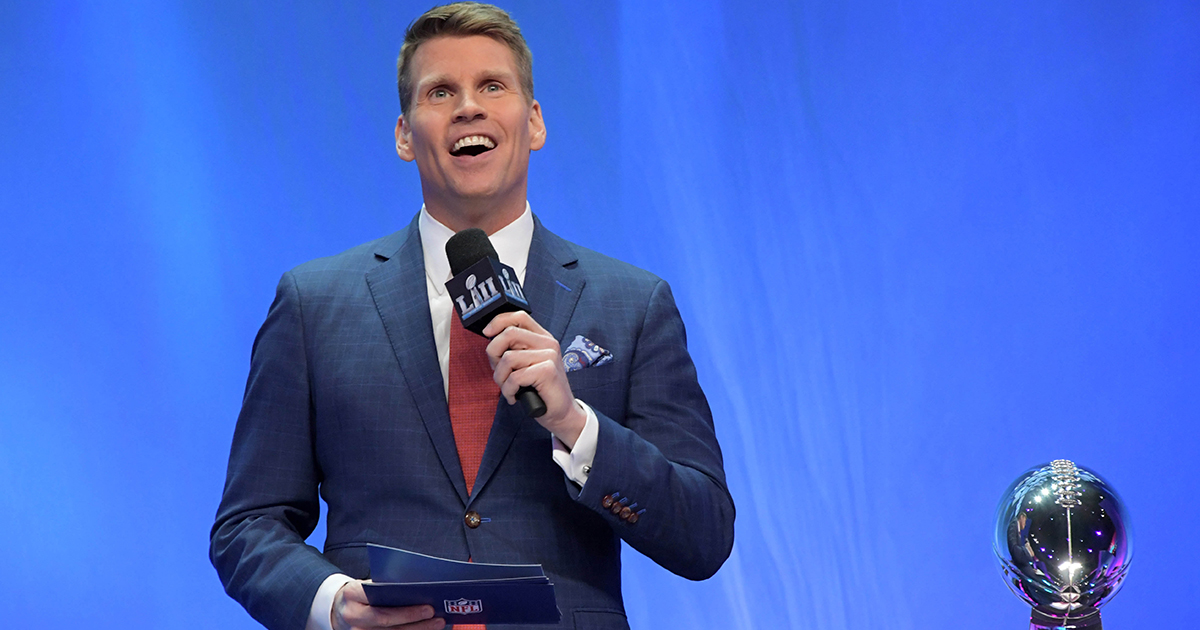
With ESPN acquiring the rights of NFL Network, questions have poured in about the future of NFL RedZone. Some have even gone a step further, wondering if college football could get a similar type of show going. Getting everything centralized instead of flipping channels or using multiple screens would help fans across the country.
Turns out, Scott Hanson would be interested in hosting college football RedZone. He spoke directly to ESPN officials when appearing on The Rich Eisen Show. As hard as it may be to believe, Hanson claims to be just as passionate about college football.
“If Bob Igor, Jimmy Pitaro want to hit me up,” Hanson said. “I love college every bit as much as I love the pros.”
Hanson does admit there might be some challenges with college football RedZone, though. One of which does involve ESPN and other networks. If ESPN is going to host the program, other networks likely will not be willing to allow the Worldwide Leader to broadcast their games. A collaborative effort with the likes of CBS, FOX, and NBC might be required.
Another would be different kickoff times throughout the sport. College football is different than the NFL, where there are really only two time slots during a normal Sunday slate.
“There’s a lot of different dynamics,” Hanson said. “If you were to do a college football RedZone. First of all, ESPN doesn’t have the rights to every contract. Second of all, the kickoffs are not all synchronized. Yeah, you get a good batch kicking off at noon ET but they’re not all synchronized, they’re all at different times.”
Hanson also believes college football not being as popular, when compared to the NFL, might be a problem. No sport in America is consumed more than the NFL throughout the calendar year — even when the season is not ongoing. College football, while still immensely popular, is just not at the same level.
Still, the upcoming Week 1 schedule might be a perfect example of why college football RedZone is needed. Three top-10 matchups are set to take place after the preseason AP poll was released on Monday afternoon. All in different time slots, fans want to watch the big-time matchups while still focusing on their own team.
If ESPN does want to take on the project, it can at least check off one box. Hanson appears more than willing to be the show’s host.
NIL
Tom Brady questions priorities in college football’s NIL era
College football looks different from Tom Brady’s days at Michigan, when the future Hall of Fame quarterback played in an era where athletes couldn’t capitalize off their name, image and likeness. Now, college athletes can make millions of dollars. That, coupled with the frequent use of the transfer portal, has Brady thankful he didn’t need […]

College football looks different from Tom Brady’s days at Michigan, when the future Hall of Fame quarterback played in an era where athletes couldn’t capitalize off their name, image and likeness.
Now, college athletes can make millions of dollars.
That, coupled with the frequent use of the transfer portal, has Brady thankful he didn’t need to deal with some of what athletes do now.
“My college experience was very challenging. It was very competitive,” Brady said on “The Joel Klatt Show.” “Those traits transformed my life as a professional. I was ready to compete against anybody, because the competition in college toughened me up so much that I had a self-belief and self-confidence in myself that whatever I faced, I could overcome that.
“I think if we take that away from a young student athlete, to say, ‘You know what, I know, it’s tough to compete, but what we’re going to do before you have to compete, we’re actually going to put you somewhere else so that you don’t have to compete,’” he continued. “That is absolutely the wrong thing to do to a young child.”
Brady didn’t blame the athletes, but rather challenged their parents to “teach your kid the right values.”
“The value isn’t always about the last dollar,” he said. “We’re valuing the wrong things. I’m not saying it’s not important. It’s one of 10 things that are important, and certainly to me, it’s not the most important. So when kids do go through that the right way, they’re actually learning the right values. When you have the right values in life, that’s going to sustain you as you move on through the rest of your life.”
This isn’t the first time Brady has been critical of where college football is going. During a 2024 appearance on the “Stephen A. Smith Show,” Brady said the current state of the NFL has been “dumbed down” because there are no longer college programs, just college teams.
Brady played at Michigan from 1995-1999. His path to become the Wolverines’ starter was an uphill climb. But things are different now in the college football landscape. Athletes want to go where they’ll have a chance to not only play, but make money during their college years.
And Brady wonders if they’ll prioritize making money over learning sustainable traits.
“Their frontal lobes aren’t even fully developed yet, and now we’re tempting them with real-life, adult situations and their parents, and now they have agents,” Brady said. “I’m sure it’s a very confusing time, and I’m sure a lot of parents are confused. I’m sure a lot of kids are confused, but because we’re just talking about money, money, money, money, like, that’s the only value in college. Is that what we’re saying? That, to me, the priorities are a bit messed up.”
If you purchase a product or register for an account through a link on our site, we may receive compensation. By using this site, you consent to our User Agreement and agree that your clicks, interactions, and personal information may be collected, recorded, and/or stored by us and social media and other third-party partners in accordance with our Privacy Policy.
NIL
David Pollack expects Oklahoma's offense to be the biggest turnaround in college football
You can put David Pollack in the Oklahoma Sooners fan club. Pollack is high on what OU could accomplish this season, claiming to be “all-in” on them. He cites the work head coach Brent Venables and others in Norman did this offseason via the NCAA transfer portal. “I’m all in on Oklahoma,” Pollack said. “I […]


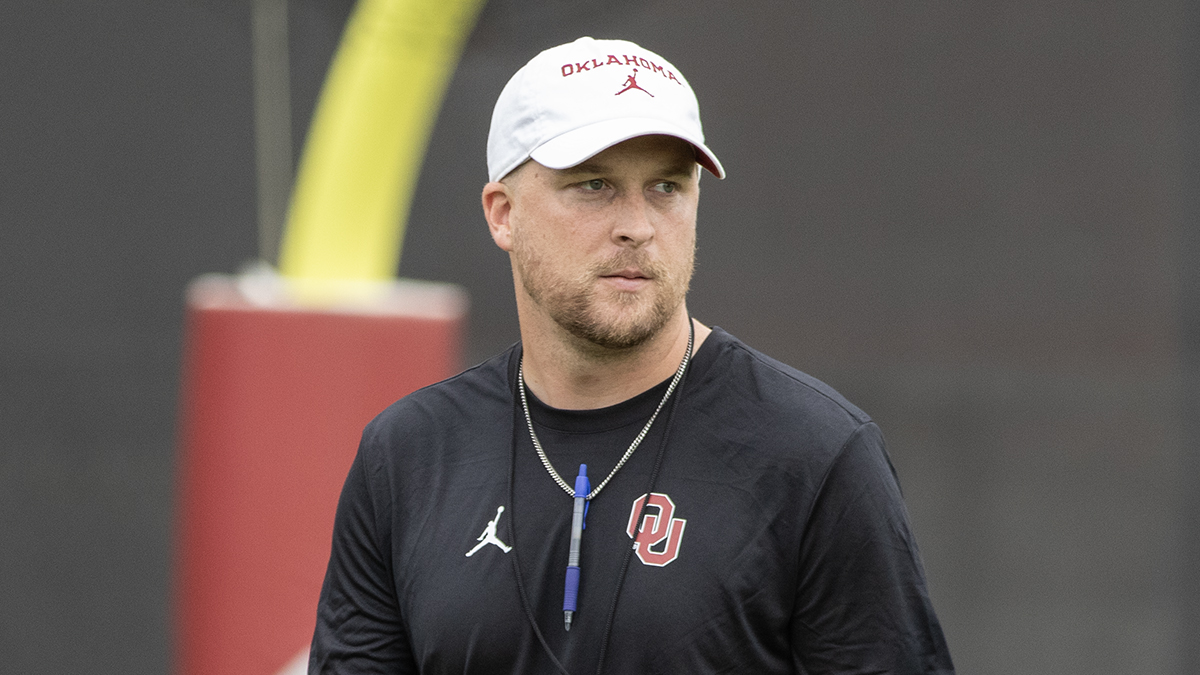
You can put David Pollack in the Oklahoma Sooners fan club. Pollack is high on what OU could accomplish this season, claiming to be “all-in” on them. He cites the work head coach Brent Venables and others in Norman did this offseason via the NCAA transfer portal.
“I’m all in on Oklahoma,” Pollack said. “I like the additions, I like (Ben) Arbuckle, I like you going into the portal. Look, Oklahoma is not Texas. Oklahoma does not have the resources that other schools have but I think they did a good job identifying a few things they had to have.”
More than anything, Oklahoma needed a quarterback after having little to no stability at the position in 2024. Jackson Arnold entered the year with high expectations but was benched in favor of Michael Hawkins early on. Eventually, Arnold took back over and closed out the season. However, he entered the portal himself, now playing for the Auburn Tigers.
Needing to find someone, John Mateer was their guy from the get-go. Oklahoma had plenty going in its favor, including the hiring of Mateer’s offensive coordinator at Washington State, Arbuckle. Having the Little Elm (TX) product get a little closer to home certainly helped as well.
Now, Pollack believes the Sooners are going to have a completely different-looking offense moving forward. Even if some high expectations from Mateer are met, as long as results are not a complete disaster, Oklahoma should be better in Pollack’s eyes.
“Can I say this and feel very confident?” Pollack said. “Oklahoma’s offense will be the biggest turnaround in all of college football… If they’re average, they are so much better than they were a year ago, it’s ridiculous. Like, if they’re average.”
While average would certainly be an improvement, there is still a desire for something more in Norman. College football analyst Josh Pate recently ranked Mateer as the No. 2 quarterback in all of college football, only sitting behind Florida‘s DJ Lagway.
Another improvement made through the portal was snagging running back Jadyn Ott. Georgia was hot on his trail too but Ott chose to play for the Sooners moving forward.
Oklahoma will get an early test for its offense Week 2 against Michigan. From there, a grueling SEC schedule will come their way. Sept. 20 is when it all kicks off, pitting Mateer up against the guy he is replacing, Arnold, and Auburn.
-

 Health1 week ago
Health1 week agoThe Women Driving A New Era In U.S. Ski & Snowboard
-

 Technology2 weeks ago
Technology2 weeks agoAlly Runs New Game Plan in WNBA All-Star Rookie Debut
-

 High School Sports3 weeks ago
High School Sports3 weeks ago100 days to men's college basketball
-

 NIL2 weeks ago
NIL2 weeks agoESPN Announces 'dont wait run fast' by mgk as New College Football Anthem for 2025
-

 College Sports3 weeks ago
College Sports3 weeks agoBYU Basketball Adds Aleksej Kostic to 2025
-

 College Sports2 weeks ago
College Sports2 weeks agoCity rows to sporting destination goal on boats of new complexes & old strengths
-
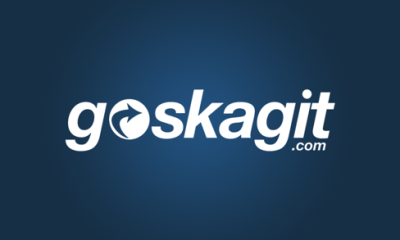
 Sports2 weeks ago
Sports2 weeks agoNtekpere honored as Second Team Academic All-American | APG State News
-

 Health2 weeks ago
Health2 weeks agoTrump administration investigates Oregon's transgender athlete policies
-

 Rec Sports6 days ago
Rec Sports6 days agoSwimming & Diving Comments on the Rules – 2025-26
-

 Technology7 days ago
Technology7 days agoAmid Sports Chaos, ‘Known’ Data and Outcomes Help Agency Win
































